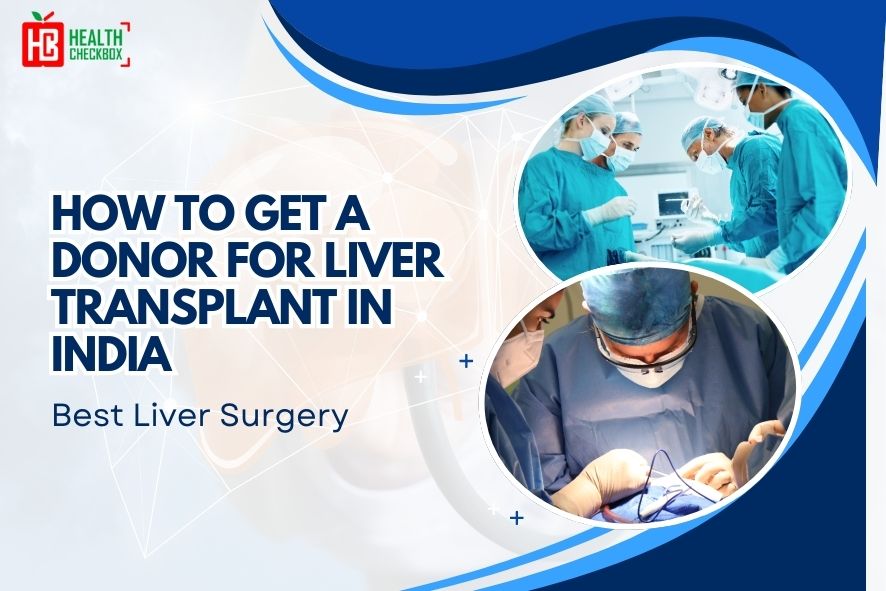Liver transplant is a medical treatment, which is suggested for millions of individuals in our country. This surgery is recommended when a liver is affected by cancer and other diseases. It can be performed by replacing an infected liver with a donor’s liver. This surgery has the highest success rates and will be performed in the healthcare department at an affordable cost. Its other name is liver treatment or surgery. In this blog, we will describe the steps to find a donor for liver transplant in India. Before that, we will discuss the types of donors suggested for this surgical procedure.
It is very challenging for a medical doctor to get a donor for this surgery. A person needs to fulfill their eligibility for a liver transplant donor. This process also requires several diagnostic procedures in the medical center. Also, a donor must be in good general health and have a compatible blood type and tissue type for the procedure.
Types of Donor for Liver Transplant Surgery
This surgical procedure can be performed through two different approaches. These are as follows:
- Living Donor transplantation: During this surgery, a patient’s infected liver is replaced by a friend’s or parent’s liver. This surgical procedure is recommended for metabolic diseases, primary liver failure, etc.
- Deceased Donor transplantation: A surgeon performs this method by replacing a damaged liver from the liver of a dead or deceased person. It is mainly applicable to those patients who suffer from acute liver cancer in India.
What are the Different Steps to Finding a Donor for the Liver Transplantation process?
The steps by which a surgeon can find a donor for liver transplant in India or all over the world are as follows:
Identification of Potential Donors
Donor identification is mainly important for liver transplantation. It is the first step of this procedure and can be performed in two different methods. These are as follows:
- Close relative: A spouse, sibling, parent, children or any close friend of a patient must donate their liver for the transplantation procedure. It is essential because it minimizes waiting times and provides better short-term survival rates in patients.
- Non-relative: A patient’s infected liver is replaced from the liver of an unknown person, who died a few days before. This approach is mainly performed under the special authorization from the government.
Evaluation Process
A complete medical evaluation is recommended to determine whether a donor is suitable for liver donation or not. It can be possible in several diagnostic procedures:
- Blood test: A healthcare professional conducts this test to check the compatibility of blood type and other relevant markers. It is mainly essential for a successful transplantation in patients.
- Imaging tests: A surgeon performs a CT scan or an MRI scan to evaluate the liver shape and size of both donor and recipient. These procedures are usually recommended to identify some health complications associated with liver disease in the healthcare department.
- Psychological tests: The psychological assessments are recommended to check whether the donor and recipient are mentally prepared for the surgery or not. It can be possible through semi-structured psychiatric interviews and other standardized psychological tests in the medical center.
- Liver function test: This diagnostic procedure is conducted to identify the function of a liver. It is mainly useful to check whether a liver is suitable for donation or not.
Matching and Transplantation
The transplant team will identify the compatibility of blood type to ensure its exact match of both recipient and donor. After that, they begin their transplantation procedure in the medical center. It can be performed in different steps:
- A surgeon makes a large incision to view the infected liver in the abdomen.
- The diseased liver is carefully removed from the abdomen and a clamp is placed into the arteries and veins to stop the flow of blood.
- A doctor then checks a donor’s liver and then places it into the abdomen.
- After placing a healthy liver, a surgeon closes the incisions through surgical staples or stitches.
Recovery
After the transplantation procedure, a patient will be taken into a recovery room to identify his or her health complications in the medical center. It is essential to determine the health status of a patient.
Benefits of Liver Transplantation
The advantages of liver transplant surgery are the following:
- It improves long-term outcomes and provides better recovery in patients.
- This surgery helps an individual to live longer and enjoy a better quality of life.
- It provides more energy to patients and helps them to feel better during normal activities.
Risks and Complications of Liver Transplantation
The liver transplant procedure also leads to several complications. These are as follows:
- Bleeding and Infection
- Leakage or blockage in the bile duct
- Clotting of blood
- Graft failure
- Wound complications
Conclusion
This blog explains the different ways to get a donor for liver transplant in India. It is a very challenging process for a doctor in the healthcare center. The donation of a liver may build trust and motivate people in our lives. It also provides several advantages to patients and improves their quality of life.

